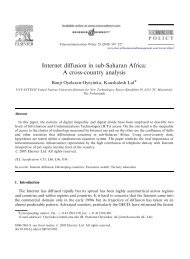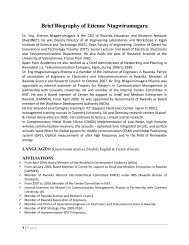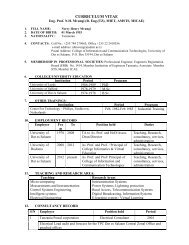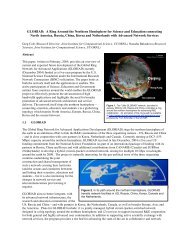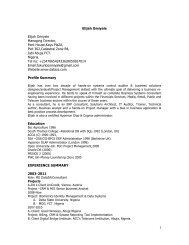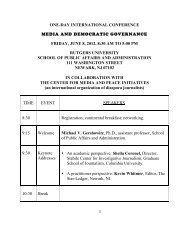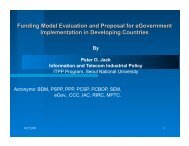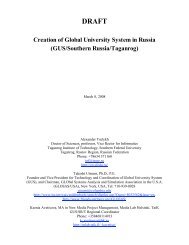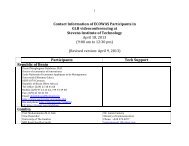Installation of WiMAX - Friends and Partners
Installation of WiMAX - Friends and Partners
Installation of WiMAX - Friends and Partners
Create successful ePaper yourself
Turn your PDF publications into a flip-book with our unique Google optimized e-Paper software.
Financial Proposal<br />
interference <strong>and</strong> attenuation. Multipath interference is caused by signals<br />
reflected <strong>of</strong>f objects resulting in reception distortion.<br />
Attenuation occurs when an RF signal passes through a solid object, such as<br />
a tree, reducing the strength <strong>of</strong> the signal <strong>and</strong> subsequently its range.<br />
Overlapping interference from an adjacent base station can generate r<strong>and</strong>om<br />
noise.<br />
1<br />
License-exempt solutions have to contend with more interference then<br />
licensed solutions, including intra-network interference caused by the service<br />
provider’s own equipment operating in close proximity, <strong>and</strong> external network<br />
interference. Licensed solutions must only contend with inter-network<br />
interference. For license-exempt solutions, RF interference is a more serious<br />
issue in networks with centralized control than in a shared network because<br />
the base station coordinates all traffic <strong>and</strong> b<strong>and</strong>width allocation.<br />
2. Infrastructure placement – Infrastructure location refers to the physical<br />
location <strong>of</strong> infrastructure elements. Infrastructure placement can be an issue<br />
for both licensed <strong>and</strong> license-exempt solutions. However, infrastructure<br />
placement presents some special considerations for license-exempt solutions.<br />
Service providers are quickly deploying solutions in specific areas to stake out<br />
territory with high subscriber density <strong>and</strong> spectrum efficiency. Such areas<br />
include higher ground, densely populated or population growth areas, <strong>and</strong><br />
areas with a less crowded RF spectrum. In addition, the physical structure that<br />
houses or supports the base station must be RF compatible, A metal farm silo,<br />
for example, may distort signals, or a tree swaying in the wind may change<br />
signal strength.<br />
4.4 SOLVING THE CHALLENGES OF DEPLOYING A LICENSE-EXEMPT WIMAX<br />
SOLUTION<br />
In a license-exempt network, proper network design <strong>and</strong> infrastructure placement are<br />
critical. Interference mitigation through planning can greatly reduce interference <strong>and</strong><br />
improve the quality <strong>of</strong> a service as shown in Figure 4 <strong>and</strong> described below:<br />
Figure 4: a properly deployed license-exempt <strong>WiMAX</strong> solution<br />
Page # 10



